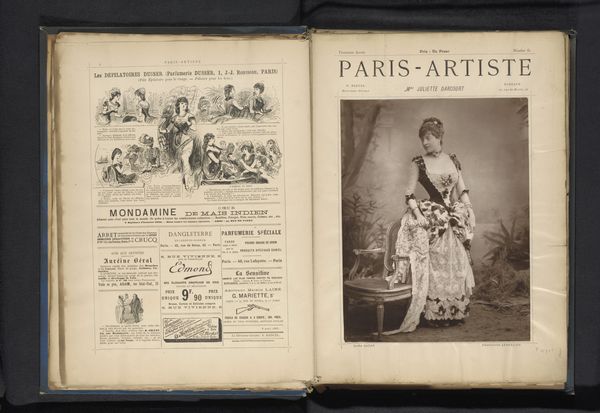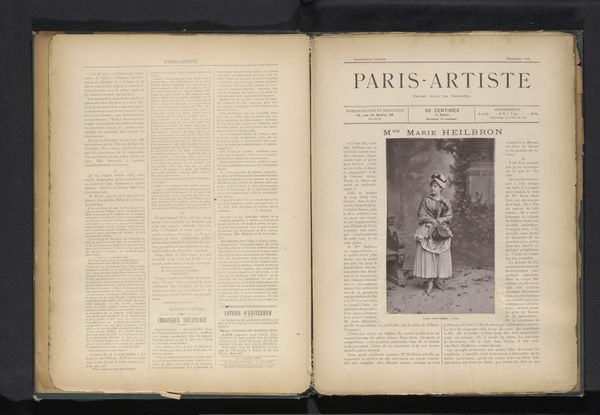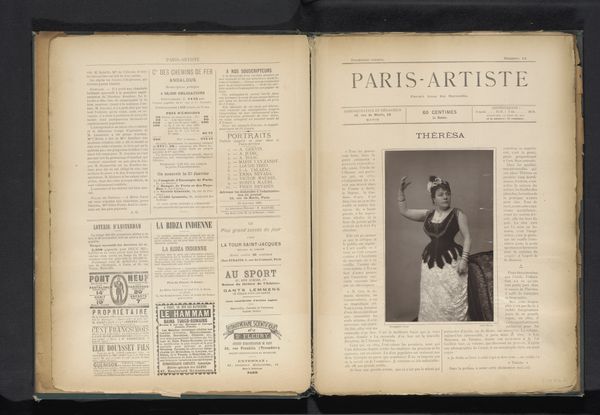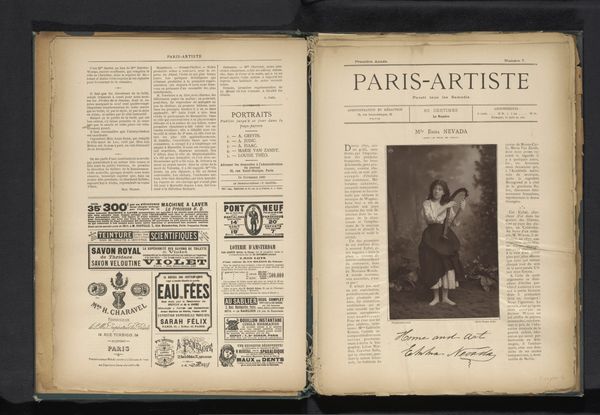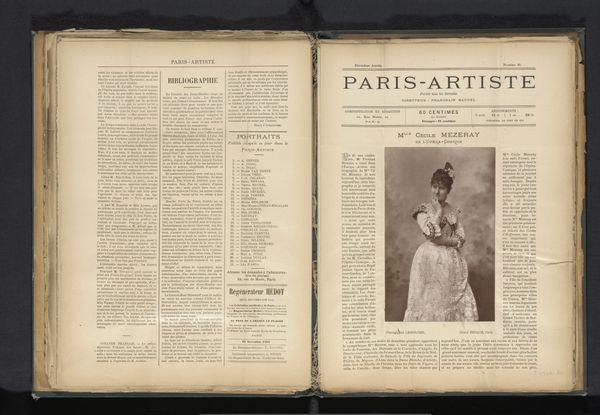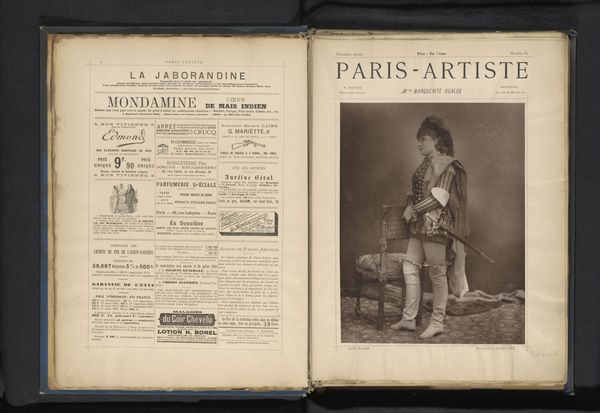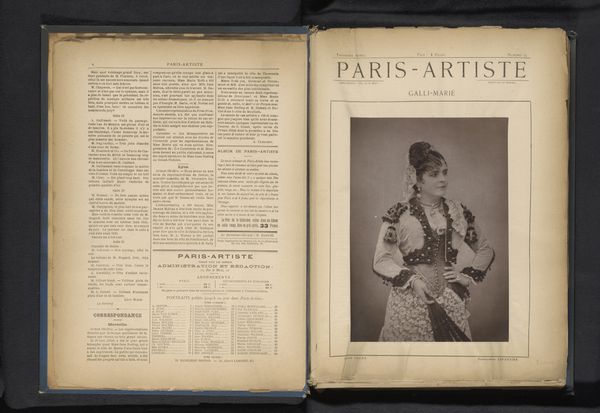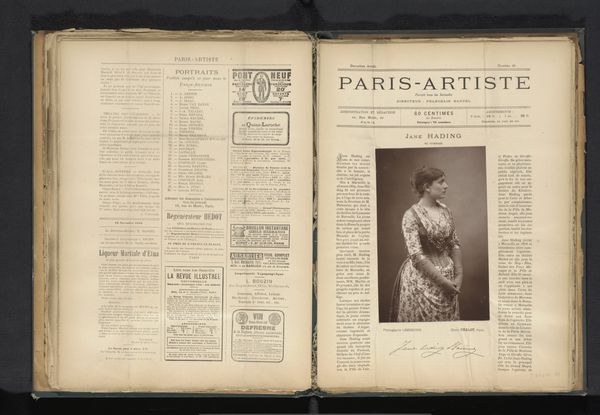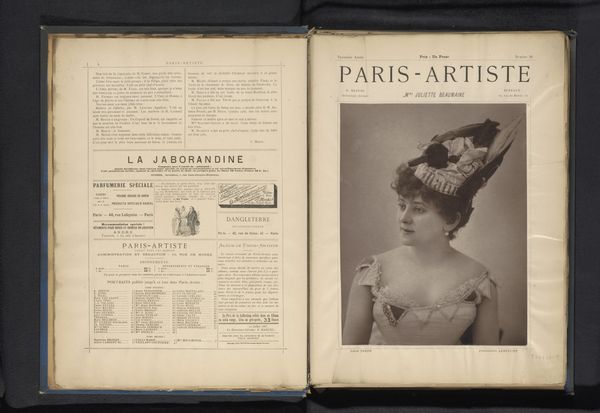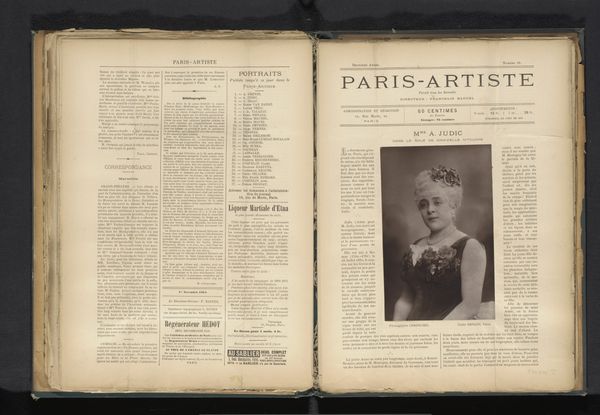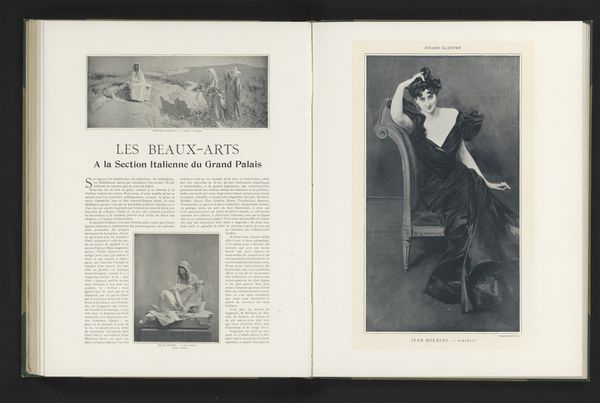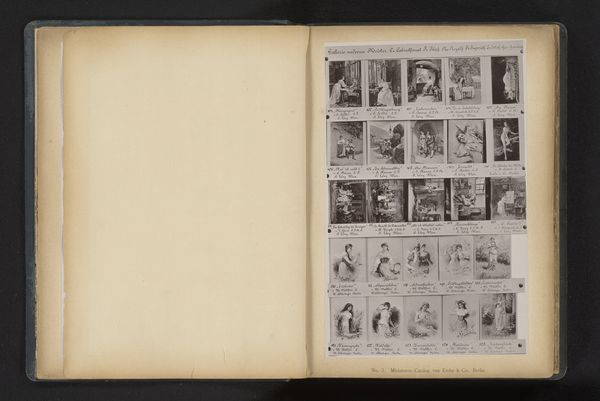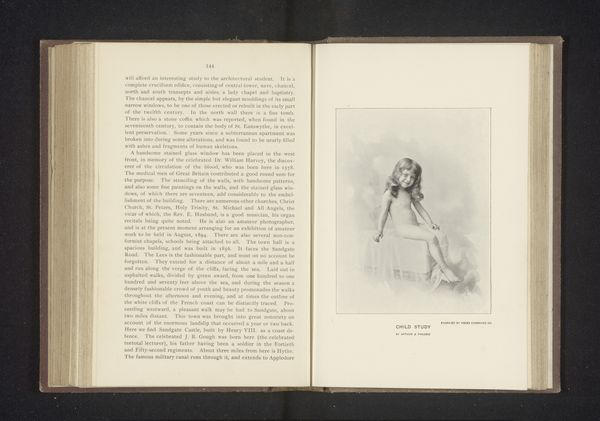
photography, albumen-print
portrait
impressionism
photography
albumen-print
Dimensions: height 206 mm, width 153 mm
Copyright: Rijks Museum: Open Domain
Editor: Here we have Nadar's "Portrait of Rosélia Rousseil," an albumen print dating back to around 1880-1885, currently housed in the Rijksmuseum. What strikes me is the tonality of the image; the grayscale values create an almost ethereal feeling around her figure. How do you interpret the impact of Nadar's photographic technique on our perception of Rousseil? Curator: The stark tonality emphasizes the formal elements of the portrait. Observe the composition. The figure is centered, almost symmetrical, anchored by the weight of the gown and her serene posture. Nadar has expertly controlled light and shadow, creating tonal contrast that shapes the dress into sculptural, almost abstract forms. The dress serves as a frame to Rousseil's serene, oval face. The composition presents an ordered relationship between surface, tonality, and space. Editor: I see your point about the balance and composition, but I am wondering, did he crop her intentionally into this specific scale to reinforce certain themes or aesthetics, such as vulnerability or sophistication, using geometry as a kind of…language? Curator: It's more accurate to consider scale within its context as an albumen print affixed to the Paris-Artiste journal pages. The composition itself contains symbolic forms but is rooted more directly in the semiotics of form and structure. In considering the symbolic function of the photograph, it's important to look past anecdotal information and delve into form. For instance, in many portraits, props work with the subject, however, in this photo, the woman has no distinct props in frame save for the edges of what appears to be a dress. The subject's stance and position create verticality against the newspaper sheet behind it. These all come together to show that photography in of itself serves a symbolic purpose: as art for documentation. Editor: So you're saying the very limitations and conscious choices in this format become part of the visual story? Interesting. Thanks for shedding light on Nadar's technique through a formal lens. Curator: Precisely! Now, consider how the visual interplay informs future photographs with respect to formalism.
Comments
No comments
Be the first to comment and join the conversation on the ultimate creative platform.

